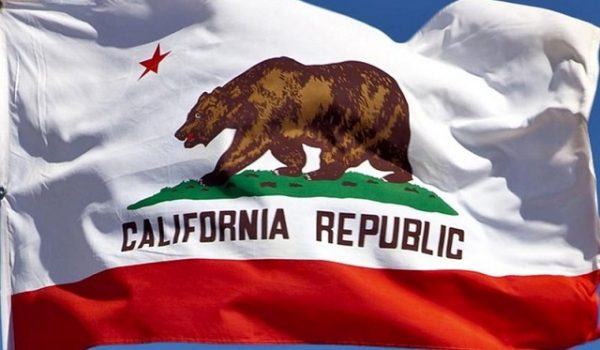
The Federalist’s Sean Davis posted a bombshell revelation (and readers know I don’t use that word as a rule) on Friday 27 September. The Director of National Intelligence (DNI) altered a key requirement for lodging a whistleblower complaint from within the intelligence community: a requirement that directly affected the complaint about the presidential phone call with Ukraine in July 2019. The “whistleblower’s” complaint was filed on 12 August 2019.
The substance of the change addresses whether the whistleblower must have firsthand, personal knowledge of the alleged wrongdoing or violation(s). In the older version of the DNI complaint submission form, the whistleblower is admonished that he or she must have “first-hand information.” In the new version, the whistleblower may indicate whether the complaint arises from firsthand (“direct and personal”) or secondhand knowledge (“heard about it from others”).
The alteration was made, according to the official revision date on the new complaint form, in August 2019.
Will this presidential election be the most important in American history?
I refer you to Sean Davis’s report for the essential read. He indicates the new version of the form was uploaded to the Web on 24 September 2019. Reproduced here is the change in language that he notes on the DNI’s complaint submission form.

A second, smaller bomblet had already gone off before Sean Davis’s. But it was confirmed with the release this week of the “whistleblower’s” complaint, which showed that the cover letter, submitting the complaint to the ICIG, was also sent to the chairmen of the Senate Intelligence Committee (Richard Burr) and the House Intelligence Committee (Adam Schiff) on 12 August. That means, as Katie Pavlich points out, that Schiff had it but didn’t publicize it (and neither did Burr, apparently).
For completeness, note further that the ICIG rendered his “urgent concern” decision on or before 26 August, when the acting DNI, Joseph Maguire, sent the complaint to the Department of Justice for its opinion. That step is mandated by the intelligence community whistleblower protection regulations.
In its publicly-released version of the opinion, the DOJ says it rendered its assessment in turn on 3 September 2019. (Footnote on page 1.) The DOJ conclusion was that the complaint did not represent an “urgent concern” for the intelligence community, because it wasn’t about intelligence activities. It was about activities by other government agencies, outside the cognizance of the DNI.
Up through 3 September, in other words, nothing in law compelled the ICIG, per se, to forward the complaint to Congress. Indeed, even after 3 September, given the judgments by both the DNI and the DOJ, nothing compelled the ICIG to send Congress the complaint at all. The DOJ was under no obligation to forward it to Congress, given that it was a complaint based on hearsay and news reporting, made by an intelligence agency employee to the ICIG, about matters not within the cognizance of the IC.
That’s why we went through the whole scripted melodrama over the last 10 days, with Congress demanding to see the complaint and the DNI and DOJ explaining that the complaint did not meet the standard of an “urgent concern” which the DNI needed to keep Congress apprised of.
But Schiff and Burr already had the complaint.
Schiff did send a tweet on 29 August that indicated, cryptically, his knowledge of the contents of the complaint. It certainly serves as the signal of a coordination of themes about Ukraine, U.S. aid, and the Trump administration’s priority of nailing down Ukraine’s role in coordinating with Democrats and the Obama executive during the 2016 election.
Trump is withholding vital military aid to Ukraine, while his personal lawyer seeks help from the Ukraine government to investigate his political opponent.
It doesn’t take a stable genius to see the magnitude of this conflict.
Or how destructive it is to our national security. https://t.co/X4yhTS2q1Z
— Adam Schiff (@RepAdamSchiff) August 29, 2019
Meanwhile, it is hard to avoid the deduction that the whistleblower rule change was put into effect in August 2019 in order to enable the 12 August 2019 complaint.
Six ways from Sunday
In the larger context of other related events, this begins to shake out like an operational campaign to lodge a specially-tailored “whistleblower complaint” at an opportune time. Pick your reasons for why it was especially opportune from the very biggest of pictures; I doubt we’d all agree on that.
But in retrospect, there was a long-building drumbeat of innuendo about former DNI Dan Coats’s days as DNI being numbered – and that drumbeat culminated in a couple of thunderous whacks starting three days after the Trump-Zelensky phone call.
The result was to leave the DNI organization without a long-entrenched head in the front office, just when the “whistleblower” complaint was filed, which was also just when the rule-change about whistleblowing was incorporated in the complaint submission form.
The timeline below is nowhere near complete, but it conveys enough to limn the outlines of a shadow war being waged from within the intelligence community against Trump’s administration. It evokes, in fact, Chuck Schumer’s minatory comment from January 2017 about intelligence agencies having “six ways from Sunday at getting back at you.”
“Let me tell you, you take on the intelligence community, they have six ways from Sunday at getting back at you,” Schumer told MSNBC’s Rachel Maddow.
“So even for a practical, supposedly hard-nosed businessman, he’s [Trump] being really dumb to do this.”
An abbreviated timeline so far:
29 Mar 2019: Accuracy in Media (AIM) publishes an article recounting an extraordinary number of media reports – entirely based on anonymous sources – that Trump was planning to fire then-DNI Dan Coats.
Media-retailed rumors of a potential departure for Coats had begun as early as the summer of 2017, and reappeared periodically between then and July 2019. In hindsight, given that Coats rarely addressed the rumors and remained in his job, this rolling thunder of rumors looks much like all the other incessant reports of rumors about Trump officials being on the skids. It looks like a put-up job being run – by the media, and probably consulting firms like Fusion GPS – to poison the political atmosphere in Washington.
But in the case of Coats, it served an additional purpose. It prepared the ground for an abrupt departure by Coats at a tactically useful time. It conditioned the media’s audience to expect Coats to leave, and to attribute his departure to friction with Trump, which was flogged over and over in the reports.
Was that scenario, indisputably a potential and feasible one, what actually happened? You can decide that for yourself.
12 Jul 2019: Axios reports, based as always on anonymous sources, that Trump wants to fire Coats. The White House said it had no comment on personnel announcements at the time. Coats’s office provided this statement:
In a statement provided by the ODNI, Coats said, “I am focused on doing my job, and it is frustrating to repeatedly be asked to respond to anonymous sources and unsubstantiated, often false rumors that undercut the critical work of the Intelligence Community and its relationship with the President. I am proud to lead an IC singularly focused on the vital mission of providing timely and unbiased intelligence to President Trump, Vice President Pence and the national security team in support of our nation’s security.”
22 Jul 2019: Politico reports, based on anonymous sources, that a visit by Devin Nunes (R-CA) to the White House was about discussing with Trump a list of potential replacements for Coats as DNI. Nunes himself was said to be under consideration. None of the White House, Nunes’s office, or ODNI commented for the Politico report.
25 Jul 2019: Presidents Trump and Zelensky hold their phone call. (A Thursday, by the way.)
28 Jul 2019: Dan Coats’s departure from DNI is announced. (Sunday.) His resignation was to be effective 15 August 2019. The deputy DNI, career intelligence official Susan Gordon, would normally become the acting DNI until a new DNI nominated by Trump was confirmed in the Senate.
8 Aug 2019: Susan Gordon* submits her resignation from the deputy DNI position, seven days before the date on which she would have become the acting DNI. CNN treated us to details that may or may not be significant, but – if true – are odd.
[Gordon’s] boss — outgoing spy chief Dan Coats — interrupted a meeting she was holding on election security and asked his deputy to submit her letter of resignation, sources familiar with the events told CNN.
And:
Gordon submitted her letter of resignation to Vice President Mike Pence, though the document itself was addressed to Trump, according to officials, a highly unusual move that prompted some confusion among some West Wing officials who waited for the President’s tweet confirming the news.
For reference, 8 August was a Thursday, and 12 August, the day on which the “whistleblower” complaint was filed, was the following Monday. In a federal organization, a whistleblower complaint filed on Monday – and being handled in good faith – is likely to come to the attention of the Number 2 official within the first week; one involving the president of the United States would come to the Number 2’s attention (at a minimum; probably the Number 1’s, in fact) on the same day it was filed. But that’s if the complaint is being handled in good faith.
The move by Coats, stepping into Gordon’s meeting and asking her to submit her resignation, is inexplicable in light of office protocol and basic decency. Coats being a very decent man, I assume there was a reason why he thought it important to establish in such a public way that Gordon had been asked to resign. One construction to put on this is that Coats had been warned it would be better for him and Gordon both to be well out of whatever was coming.
Conversely, Trump had no reason to want things to be handled this way. Such gratuitous fanfare would serve no purpose. It would be nothing but blind prejudice to assume the strange interlude in Gordon’s meeting was something demanded by the White House.
We’re unlikely to ever get a straight answer on that point. Or on why Gordon’s resignation letter was sent to Pence, which on the face of it looks like a minor delaying tactic for someone’s benefit; it’s just not clear whose. Again, there is no obvious motive for the Trump White House to have directed that it be done this way.
But this is the right place in the sequence of context to put the next entry.
August 2019: The standard for IC whistleblower complaints is altered on the complaint submission form. We don’t have a specific date on that, but it was presumably before 12 August 2019, and at a time when the offices of both the DNI and the deputy DNI were in flux. (9 August 2019 stands out like a sore thumb, but probably without immediate notification to DNI branch and department heads or IC agencies; see tweet. The date and time McIntyre notes for the PDF file, 24 September, is the same thing Sean Davis cites.)
Here is something seriously strange. The Disclosure of Urgent Concern Form located earlier today at DNI is only two days old according to its pdf properties. https://t.co/l8foAAj2sC pic.twitter.com/0iwXTxcgIv
— Stephen McIntyre (@ClimateAudit) September 27, 2019
The change was a significant one for policy; it normally would not have been made without the review of both top DNI officials. In the August date range in question, however — 8-12 August — that could have been just what occurred.
But publishing the new form before the 12 August complaint had played its role would have tipped off others in the IC that something was going on. That would explain why the actual Web publication of the new form was delayed until this past week.
12 Aug 2019: The “whistleblower” complaint is filed with the ICIG, and is copied to Senator Burr and Rep. Schiff.
15 Aug 2019: Dan Coats and Susan Gordon depart DNI.
16 Aug 2019: Joseph Maguire moves from chief of the National Counterterrorism Center (an agency directly subordinate to the DNI) to the position of acting DNI.
24 Aug 2019: Side note: A House staff delegation, sponsored by the Atlantic Council, departs for Ukraine for a 24-31 August visit. This information is circulating on Twitter, and I include it for completeness because advantage could conceivably have been taken of it for in-country coordination at a significant time. However, it was a previously scheduled and bipartisan visit during the August recess, as indicated by the participant list and the dates of prior travel approval, which were in July. See the tweet thread for links on the details. Visits like this are common for newer staffers in the non-election-year August recesses; the staff participants probably didn’t include many senior ones. So it does not appear overtly to have a planned connection to the other developments in the emerging Ukraine timeline.
26 Aug 2019: ODNI, under Acting DNI Joseph Maguire, forwards the “whistleblower” complaint to the DOJ for an assessment of the “urgent concern” standard under which it might be forwarded to Congress.
29 Aug 2019: Adam Schiff sends a tweet echoing the substance of the “whistleblower” complaint.
3 Sep 2019: The DOJ renders its assessment of the “urgent concern” issue, concluding that the “whistleblower” complaint doesn’t meet the standard of addressing an intelligence activity. The ICIG is thus not required by law to forward the complaint to Congress.
On ensuing dates in September, the media stirred the pot to make sure the complaint was publicized, and the current drama began.
I have a feeling we’ll be adding to this timeline.
* This footnote information falls in the category of “worth mentioning,” although how it might fit with a reconstruction of events would require having more details. Ms. Gordon – somewhat naturally, given her position in the IC at the time – was closely involved in top-level decision-making about some programming and procurement issues that are directly linked with the events of Spygate. This brief passage on her biography from FCW, in its write-up about her impending resignation, tells a significant tale, if you know how to read it.
Gordon spent the bulk of her career at the CIA, eventually being put in charge of securing and integrating advanced cyber capabilities into the agency’s IT assets and set the stage for the move to the cloud with leadership on the Intelligence Community IT Enterprise or ICITE program. She also helped lead to the creation of In-Q-Tel, a CIA-funded non-profit venture capital firm that invests in innovative technologies for the intelligence community.
As Deputy Director of the National Geospatial Intelligence Agency, Gordon helped lead the push to adopt ICITE – “something that sounds yawn inducing, but is actually a move that will enable everything we want to do,” she said at a 2016 speech.
The ICITE IT enterprise, and the programming of a cloud-computing environment for the IC, were key factors in facilitating the weaponization of bulk surveillance and unmasking against Americans. The CIA cloud acquisition was part of that implementation. The contract for it was awarded to Amazon Web Services in 2013, and put Jeff Bezos, owner of the Washington Post, in a privileged contractor position with the U.S. intelligence community.
I stress that these points by themselves in no way implicate Susan Gordon in anything untoward. But they can’t fail to be of interest when she has been shoved out the door at the same time as the DNI.
The same caveat applies to the other takeaway from her biography: the involvement with In-Q-Tel. In-Q-Tel was formed in 1999 (from a previous somewhat similar entity) as the front company through which the CIA invests in private-enterprise technology that is of interest to the intelligence community. Although it isn’t clear how hands-on Ms. Gordon’s involvement was in recent years, she would have continued to play a significant role in decisions about it from her position as deputy DNI. The emphasis on both ICITE and In-Q-Tel in her bio confirms that a key element of her community expertise was in IT system program management.
In-Q-Tel was a major investor in FireEye, the cybersecurity firm whose subsidiary Mandiant identified the Russian-linked “advanced persistent threats” (APTs 28 and 29) to which the DNC server intrusions have been attributed by CrowdStrike. FireEye was the firm whose judgment about the Russian “fingerprints” on Cozy Bear and Fancy Bear was most frequently cited as corroborating CrowdStrike’s, in the 2016-17 period.




